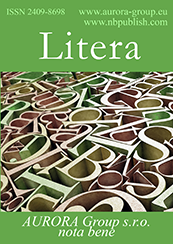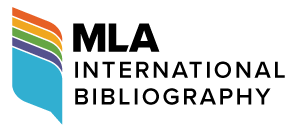Linguistics
Reference:
Varfolomeeva, Y.N., Baikalov, N.S. (2025). Urbonnymy of new towns in Transbaikalia (case-study of Severobaikalsk). Litera, 4, 1–9. https://doi.org/10.25136/2409-8698.2025.4.73648
Abstract:
The relevance of this work is associated with the attention of modern linguistics to the problems of studying the language of the city – a multifaceted phenomenon studied today from linguistic, historical, cultural and other sides. The purpose of the study is to classify urban names of new cities of Transbaikalia using Severobaikalsk as an example. The town is the most important settlement, the emergence of which is inextricably linked with the construction of the Baikal-Amur Mainline, so the study of the Soviet legacy and new nomination practices is especially interesting. The area of consideration includes the most stable layer of onomastics – godonyms and the most mobile – ergurbonims, which very quickly reflect social and cultural changes. The research methods : the continuous sampling method was used to select the empirical material (godonyms and ergourbonyms). Structural-descriptive and quantitative methods were used to classify urbonyms and interpret the results, allowing to focus on the content of urbonyms and calculate the frequency of urbonym groups. The scientific novelty consists in the fact that works on the study of urbonymy and ergourbonymy of new towns of Transbaikalia are practically absent. The paper involves unused factual material, 177 urbonyms (names of streets, lanes, avenues, quarters) and more than 270 ergourbonyms (names of cafes, canteens, shops, studios, hairdressers, hotels and other objects of Severobaikalsk) are analyzed, their functions are described. The results of the study consist in identifying 11 thematic groups of godonyms and 11 groups of ergurbonims, among which are names referring to the Soviet past, geographical, metaphorical, navigational names, etc. The role of the Soviet past is great in the system of godonyms, ergurbonims to a greater extent reflect modern trends in the development of the onomastic system.
Keywords:
Transbaikalia, new town, types of ergourbonyms, classification of godonyms, Severobaykalsk town, ergonym, onomastics, urban name, godonym, city language
Journalism
Reference:
Baranova, E.A. (2025). The Problem of Media Brand Expansion. Litera, 4, 10–23. https://doi.org/10.25136/2409-8698.2025.4.72933
Abstract:
Some large media companies, faced with the crisis associated with the emergence of the Internet, gradually came to the idea of extending the media brand. They sought to create revenue models that would go beyond charging for content and selling audiences to advertisers. Their goal was to use the value of the media brand, expanding it to new products and services. The purpose of this paper is to study how media companies use brand equity with positive, strong and unique associations to facilitate the launch of new, non-traditional media products or services. The subject of the study is the influence of the media brand on the commercial viability of media activities in the context of digitalization. The object of the study is the problem of expanding the media brand. The article examines the experience of foreign and Russian companies in the field of horizontal (media) and vertical (non-media) expansion of the media brand. The study for the first time focuses on the experience of the media holding "Komsomolskaya Pravda", which took initiatives aimed at developing other sources of income to expand the boundaries of the business. Using the method of in-depth interviews conducted with an employee of the online sales service of a media holding in 2019 and 2025, the author studied the long process of creating a full-fledged book publishing house based on the Komsomolskaya Pravda media holding. The experience of this media outlet can be used in the practical activities of editorial offices of Russian media companies. The author came to the conclusion that in the 21st century, media companies began to actively use brand equity with positive associations to facilitate the launch of goods or services on the market. The sale of non-news products is more complex and is only advisable for strong brands with a strong image. It can have a great influence on the attitude towards the additional product, since consumers rely on their impression of the original brand. Strong media brands are positioned in people's minds even when they do not consume them. Media companies are in a unique position in creating and expanding their brand equity. The fact that they own and control communication tools that reach a huge number of consumers every day is a huge asset.
Keywords:
Branding, Media image, Non-news media products, Club system of the media company, Media convergence, Online Media Stores, E-commerce, Media Brand Expansion, Media Brand, Brand equity
Literary criticism
Reference:
Su, K. (2025). The Dreams in M. Y. Lermontov’s Lyrics: Between Reality and Illusion. Litera, 4, 24–36. https://doi.org/10.25136/2409-8698.2025.4.73755
Abstract:
The article examines the motif of dreams in the works of M. Yu. Lermontov as a key element of his artistic world, reflecting the poet's philosophical reflections on fate, reality, and illusion. Analyzing Lermontov's poetic works, the author identifies the main functions of the dream : the desire to escape from reality, prophetic revelations, the recognition of the illusory nature of the world, and the symbol of inanimate nature. Special attention is given to the dualism of dreams and reality, where the protagonist balances between the ordinary and the fantastic, striving to find the truth but facing even greater uncertainty. The relevance of the research article is to enrich the experience of studying Russian literature, and that in deepening the analysis of the works of M.Y. Lermontov. The methodological foundation of the research includes elements of comparative and structural analysis, allowing the study of the artistic representation of dreams in Lermontov's poetry. Methods such as descriptive method, system-semantic analysis method and comparative method will be used as the main method. The research results show that dreams in Lermontov’s works serve not only a narrative and symbolic function but also express philosophical concepts related to existential questions of human existence. The study demonstrates that the dream in Lermontov's poetry is multifaceted: it symbolizes the boundary between reality and illusion, foresees inevitable fate, and serves as a means to access various levels of consciousness. The scientific novelty of the study consists in the expansion and deepening of the dream motif in the lyrics of M. Y. Lermontov. The conclusions of the article emphasize the importance of this motif for understanding Lermontov's worldview, his views on life, death, and the impossibility of achieving absolute knowledge. The motif of dreams occupies an important place in Lermontov's poetry.
Keywords:
artistic world, boundaries of consciousness, metaphysics of dreams, existential philosophy, fate, prophetic dream, reality and illusion, Romanticism, Lermontov, dream motif
Linguoculturology
Reference:
Zhang, W. (2025). Comparative analysis of Russian and Chinese literary traditions: F. M. Dostoevsky's works translation and adaptation to the cultural context. Litera, 4, 37–48. https://doi.org/10.25136/2409-8698.2025.4.73923
Abstract:
The subject of the study is the specifics of the interaction of literary traditions of Russia and China, considered within the framework of a comparative analysis of the original and translation of the works of F. M. Dostoevsky and presented in the context of the cultural characteristics of both nations. The purpose of the study is to identify the key features of the original and translation of the writer's works into Chinese and their relationship with the Chinese literary tradition within the framework of the development of Russian-Chinese cultural relations. Objectives of the study: to examine how the central themes and motifs of Dostoevsky’s works are perceived and interpreted within the framework of the Chinese literary tradition; to identify significant cultural factors characteristic of China and having a significant impact on the perception of the works. The research methodology is represented by: methods of comparative analysis, which allow us to compare both the original texts with their translations, and the Russian and Chinese literary traditions in general; methods of content analysis, aimed at studying the specifics of the interpretation of key themes and motifs; methods of cultural anthropology for a deeper understanding of the cultural context in which the translation is carried out. In accordance with the main findings of the study, it is important to note that translations of Dostoevsky's works into Chinese demonstrate significant cultural transformations, caused mainly by differences in mentality and worldview. The novelty of this study lies in the fact that for the first time a comparative analysis is conducted not only of the original and translation of Dostoevsky’s works, but also of the cultural context of their perception and interpretation, which allows for a deeper understanding of how Russian and Chinese literary traditions intersect and interact with each other.
Keywords:
text adaptation, intercultural dialogue, interpretation, artistic techniques, central themes, cultural context, works by Dostoevsky, cultural transformations, literary traditions, philosophical ideas
Literary criticism
Reference:
Anisimova, O.V., Savushkina, T.A. (2025). From the literature of the "New Wave" to contemporary English-language fantasy: Zelazny, Martin, Gaiman. Litera, 4, 49–59. https://doi.org/10.25136/2409-8698.2025.4.73928
Abstract:
The article is dedicated to the study of the evolution of "New Wave" fantasy literature from the 1960s to the 1970s, based on the works of three central figures in contemporary English-language fantasy literature: Roger Zelazny, George Martin, and Neil Gaiman. It specifically discusses the transformation that fantasy underwent over several decades, starting with the movement of so-called "New Wave" authors in the second half of the 20th century, up to the postmodern literature of the early 21st century. The focus is primarily on identifying and characterizing key features of contemporary English-language fantasy, such as intertextuality, the inclusion of mythological symbols in the text, references to psychoanalytic theory, and the blending of various genres. The methodology employed in this study includes comparative, literary, and historical-cultural analysis, as well as the study and generalization of information. The scientific novelty of this research lies in the attempt to trace the roots of contemporary fantasy, the canons of which were shaped by the work of American science fiction writer Roger Zelazny. Analyzing the key works of the discussed authors allowed for the identification not only of common features but also for pointing out the vector of their transformation and reinterpretation in the works of fantasy writers from the late 20th to the early 21st century. The literature of the "New Wave" in the 1960s and 1970s revolutionized fantastic literature by breaking down the boundaries that existed between genres, bringing popular literature closer to high literature, and fostering their mutual enrichment. The poeticization of prose, the use of multilayered allusions, psychoanalytic theories, syncretism, and the blending of various mythological systems with contemporary realities constitute the creative legacy of Zelazny, which is organically embraced by his followers—Martin and Gaiman.
Keywords:
Gaiman, Martin, Zelazny, science fantasy, science fiction, English language fantasy, New Wave, foreign fiction, intertextuality, mythology
Linguoculturology
Reference:
Shavtikova, A. (2025). National Stereotypes Representation in Humorous Film Discourse. Litera, 4, 60–69. https://doi.org/10.25136/2409-8698.2025.4.73951
Abstract:
The scientific novelty of this study lies in its innovative perspective on the role of stereotypes as comedic tools in television productions, specifically investigating their impact on audience perception and intercultural communication. This research introduces a novel approach by focusing on the British sitcom "Mind Your Language," which serves as a case study for examining how national stereotypes are employed to produce humor within a televised format. By dissecting the exaggerated portrayal of national traits—such as accents, cultural characteristics, and behaviors—the article provides fresh insights into the mechanisms through which these elements elicit comedic effects and contribute to entertainment value. What sets this study apart is its dual focus on both the comedic and sociocultural dimensions of stereotype usage. It not only analyzes the immediate humor derived from these portrayals but also delves into the broader implications for cross-cultural understanding and dialogue. The research acknowledges criticisms surrounding the potential overuse of stereotypes and the risk of reinforcing negative perceptions; however, it simultaneously highlights the role of such stereotypes in diffusing tension and promoting humorous engagement with cultural differences and misunderstandings. Moreover, the study opens avenues for further exploration by proposing an analysis of the influence of national stereotypes in cinematic discourse on viewers from diverse cultural backgrounds. It advocates for assessing the effectiveness of humor as a strategic tool for bridging intercultural gaps, enhancing mutual understanding, and fostering tolerance. This expanded perspective underscores the potential of television comedy not only as a source of entertainment but also as a platform for promoting intercultural empathy and dialogue in an increasingly globalized world.
Keywords:
humor, cultural Barriers, exaggeration, cultural characteristics, intercultural communication, national stereotypes, comedic effect, audience Perception, film discourse, linguoculture
Translation
Reference:
Liu, M. (2025). Standards for Assessing the Quality of Political Discourse Translation Using Large Language Models. Litera, 4, 70–85. https://doi.org/10.25136/2409-8698.2025.4.73946
Abstract:
The subject of this research is the development of a comprehensive system of standards for assessing the quality of political discourse translation using large language models. The study focuses on creating an integrative approach to evaluating the translation of Chinese political discourse into Russian, which is particularly relevant in the context of strengthening the Russian-Chinese strategic partnership. The developed three-level assessment model takes into account the specifics of political discourse, characterized by a high degree of terminological density, conceptual specificity, and ideological marking. The model is based on parameters of informational integrity, linguistic accuracy, and intercultural readability, providing a comprehensive analysis of translation at all levels: from lexical and syntactic correspondence to the transfer of semantic relations and cultural-pragmatic aspects. Special attention within the research is given to applying the technological capabilities of large language models for automated analysis of translation problems and improving the political text translation. The proposed system takes into account the requirements of the "Basic Standards for Translating Chinese Political Discourse," adapting them to the context of Russian-Chinese intercultural communication. The research methodology is based on a systematic analysis of classical and modern translation assessment models, followed by functional modeling of an integrative approach that combines linguistic theories, computational methods, and the capabilities of large language models for translation assessment. The scientific novelty of the research lies in bridging the gap between theoretical models of translation assessment and their practical implementation by integrating traditional linguistic approaches, computational methods, and industry standard requirements with the technological capabilities of large language models. For the first time, a detailed structure for assessing the quality of political discourse translation with 10 second-level parameters and 36 third-level parameters is proposed, providing a comprehensive analysis of translation activity. It has been proven that the use of large language models significantly increases the efficiency and objectivity of assessment through deep semantic analysis and automated diagnosis of translation problems. The developed system has high practical value, being applicable both for analyzing completed translations and for predicting potential difficulties in translating political texts in the context of Russian-Chinese intercultural communication.
Keywords:
Russian-Chinese communication, automated translation diagnostics, intercultural readability, linguistic accuracy, information integrity, integrative approach, large language models, political discourse, assessment standards, translation parameters
Linguoculturology
Reference:
Li, L., Lazareva, O.V. (2025). Linguocultural foundations of Russian and Chinese proverbs about husbands and wives. Litera, 4, 86–97. https://doi.org/10.25136/2409-8698.2025.4.74023
Abstract:
The subject of the study is the paremiological fund of the Russian and Chinese languages. The object of the research is proverbs as elements of the phraseological system that reflect the cultural and value attitudes of ethnic groups. The author examines such aspects of the topic in detail as the interpretation of proverbs in Russian and Chinese linguistic traditions. In Russian linguistics, paremiology is defined as stable, reproducible expressions with instructive content, which encapsulate folk wisdom, morality, and traditional views. In Chinese linguistics, proverbs are classified as part of phraseology and include forms such as (idiom, chengyu), (proverb, yanyu), (allegory, xiehouyu), (phraseological combination, guanyunyu), and (saying, suyuy). Special attention is given to the reflection of historical experience and the system of value dominants in Russian and Chinese proverbs. A linguistic and cultural analysis of proverbs related to the image of a husband and wife reveals their connection to patriarchal moral and ethical attitudes. Despite the emphasis on the dependent position of women, proverbs also capture the idea of mutual respect and agreement as essential values of family life. The description of the roles of husbands and wives in Russian and Chinese paremiology has an ambivalent nature. This article employs comparative, component analysis and linguistic and cultural commentary methods. The main conclusions of the conducted research are the identification of the fact that proverbs about husbands and wives in the Russian and Chinese paremiological fund reflect traditional patriarchal and androcentric notions of family roles. In both linguistic cultures, the importance of agreement and mutual respect between spouses is emphasized as the foundation of family well-being, despite the noted dependence of the wife on the husband. A unique contribution of the author to the research topic is the comparative analysis of proverbs from the two languages, allowing for the identification of common value orientations associated with family and drawing attention to the ambivalence of the images of husbands and wives, which reflects the multifaceted cultural perception of marital relations. The novelty of the research lies in the linguistic and cultural approach to the study of paremiology, revealing deep layers of national worldview, fixed in brief and metaphorical sayings. The author demonstrates that, despite cultural differences, both traditions convey important family values through proverbs, passed down from generation to generation.
Keywords:
Russian linguistics, Chinese linguistics, linguistic and cultural foundations, paremiological foundation, proverb, paremia, husband, wife, Chinese language, Russian language
Literary criticism
Reference:
Song, X., Chang, Y. (2025). The Glass Paperweight in the Symbolic Framework of 1984: Historical Falsification, Cognitive Control, and Dehumanization. Litera, 4, 98–109. https://doi.org/10.25136/2409-8698.2025.4.74003
Abstract:
This study analyzes the symbolic role of the glass paperweight in George Orwell’s 1984 as a lens to expose totalitarian mechanisms governing history, memory, and humanity. The artifact embodies three key functions: a relic of a lost past, a metaphor for resistance against “Ingsoc,” and a symbol of freedom’s fragility. It connects to historical falsification via the “Ministry of Truth” and “memory holes,” activates Winston’s suppressed memories, and contrasts with the dehumanizing “telescreens” that erase individuality. Its destruction allegorizes the eradication of dissent, while its fragility mirrors Winston’s fate and its transparency echoes the regime’s omnipresent surveillance. Methodologically, the study combines structural-semantic text analysis (lexical patterns), philosophical interpretation of totalitarianism, and comparative examination of Oceania’s dystopian elements (“Newspeak,” surveillance). The novel contribution lies in systematizing the paperweight’s symbolism, previously overlooked, to unify the novel’s core themes: historical manipulation, cognitive control, and dehumanization. Key findings reveal: The paperweight materializes “forbidden” memory; its shattering by the Thought Police parallels Winston’s psychological collapse, illustrating individual resistance’s futility. Its destruction marks the triumph of technological control (“telescreens”) over human emotion and aesthetics, while fragmented memories fail to reconstruct alternative histories. The artifact’s contrast with totalitarian tools underscores the power imbalance in pursuing truth, highlighting rebellion’s impossibility under panoptic surveillance. By framing Orwell’s use of a minor object to convey universal dystopian principles, the study bridges 1984 to modern digital authoritarianism—mass surveillance and algorithmic manipulation—demonstrating its enduring relevance. These insights deepen understanding of the novel’s symbolic structure and its resonance with 20th–21st-century political philosophy, offering frameworks to analyze evolving totalitarian practices.
Keywords:
Suppression of Dissent, Ingsoc Ideology, Dystopian Literature, Surveillance and Monitoring, Technological Authoritarianism, Memory and Oblivion, Dehumanization, Historical Falsification, Totalitarian Control, Symbolism of the Glass Paperweight
Language
Reference:
Bahkmatova, A. (2025). Strategies of new words formation in Chinese and Japanese in the 21st Century. Litera, 4, 110–130. https://doi.org/10.25136/2409-8698.2025.4.74033
Abstract:
In the 21st century, globalization has led to the emergence of new objects, concepts, and phenomena, prompting the creation of new words and neologisms. Languages that use logographic writing systems possess a unique tool for recording neologisms, which enables them to coin new words not only through phonetic borrowings but also by creating compounds from meaningful character-morphemes that reflect the essence of the concepts they denote. This article explores the strategies of recording and the methods of forming new words in 21st-century Chinese and Japanese, as well as the relationships between them. Particular attention is given to the potential mutual influence of Chinese and Japanese word-formation processes, considering the presence of neologisms in both languages that share identical or similar logographic compositions. To identify the mechanisms of neologism formation and to determine the differences and intersections between the two languages, a sample of 70 high-frequency English neologisms—documented in the Oxford Dictionary after the year 2000—was compiled. These neologisms were grouped into seven thematic categories. For each English term, corresponding equivalents in Japanese and Chinese were identified and subsequently analyzed through comparative methods. The analysis reveals that Japanese tends to favor phonetic borrowings, whereas Chinese shows a stronger inclination toward calquing and the creation of new logographic compounds. In scientific vocabulary, both languages exhibit parallel word formation, wherein new words are independently coined in each language without direct borrowing from one another. Borrowings of neologisms from Japanese into Chinese are occasionally observed in scientific domains such as physics, chemistry, and medicine. However, borrowings from Chinese into Japanese are virtually nonexistent, aside from a few rare phenomena related to popular culture. Overall, globalization has contributed more to the growing lexical dependence of both languages on English than on each other.
Keywords:
Japanology, Sinology, root compounding, linguistic globalization, word formation, phonetic borrowings, partial calques, calques, logography, neologisms
 This work is licensed under a Creative Commons Attribution-NonCommercial 4.0 International License.
This work is licensed under a Creative Commons Attribution-NonCommercial 4.0 International License.











 © 1998 – 2025 Nota Bene. Publishing Technologies. NB-Media Ltd.
© 1998 – 2025 Nota Bene. Publishing Technologies. NB-Media Ltd.




